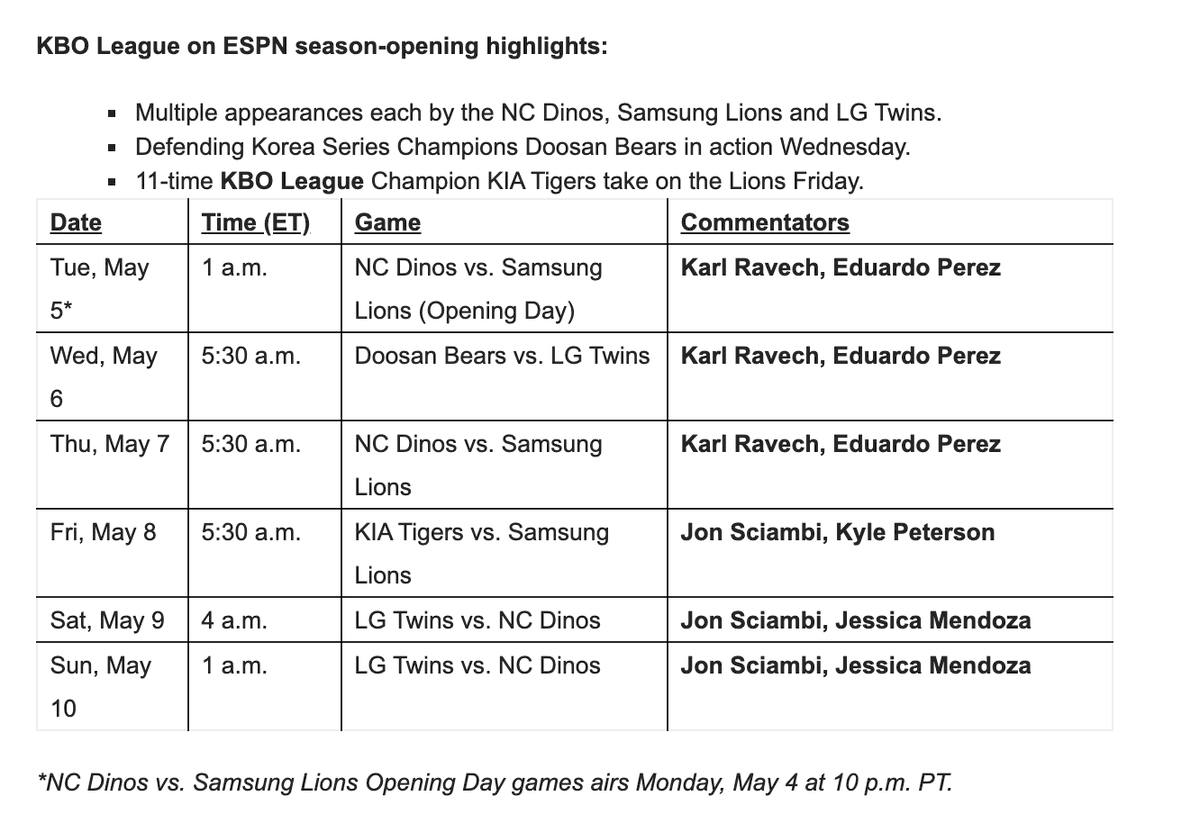In the absence of Major League Baseball, the more adventurous among us have turned to the only foreign leagues able to move forward with their respective seasons, namely the Chinese Professional Baseball League, which opened on April 12, and the Korea Baseball Organization, whose Opening Day will be Tuesday. While both leagues contain a smattering of familiar names from MLB and the high minors, the language barriers for those leagues can be daunting. To appreciate those circuits’ nuances, their respective histories, and the cultural differences that separate them from MLB, it’s helpful to have a guide, or guides.
For the KBO, perhaps the best among them is Dan Kurtz, a 40-year-old stay-at-home father of three who lives in Tacoma, Washington. Born in Seoul, South Korea, but adopted as an infant and raised in the U.S., Kurtz’s interest in the KBO was kindled when he traveled to his birth country for the first time in 1999, at age 19. Three years later, he started MyKBO.net, an excellent English-language resource that was initially a message board but that now features schedules, standings, stats, and instructions on how to stream games — and even a fantasy league. As the eyes of the world have turned to the KBO, he’s emerged as an outstanding ambassador, tirelessly answering the questions of those looking to find their way to appreciating the league, this scribe included.
Last week, Kurtz agreed to an email interview and offered more insights into the league — far more than could fit into a single post! What follows here, where we discussed Kurtz’s background and how he became a go-to for all things KBO, and in Part 2, where we get into the real nitty-gritty of what to watch for in the 2020 season, is a lightly edited transcript of our conversation. For the purposes of clarity and familiarity, I have used the English naming order, placing Korean surnames last instead of first.
Jay Jaffe: Were you a baseball fan before [traveling to Korea] (MLB or foreign leagues) and if so, who did you root for?
Dan Kurtz: Having grown up in Eastern Pennsylvania, I became a Philadelphia Phillies fan and like many kids in the area, I pretended to be Mike Schmidt and hit a game winning home run. Before moving to Lancaster, I lived near Reading and went to a lot of Reading Phillies games. I can remember going to some games with friends and lining up to get autographs from the likes of Pat Combs and Jason Grimsley. So despite having moved from the area and around the world the past few years, I am still a Phillies fan and am also trying to make my kids fans of the team as well. Currently, they show no affinity towards baseball; they just refer to the Phils and my other favorite sports teams as “Daddy’s team.”
Read the rest of this entry »

 Jay Jaffe
Jay Jaffe

